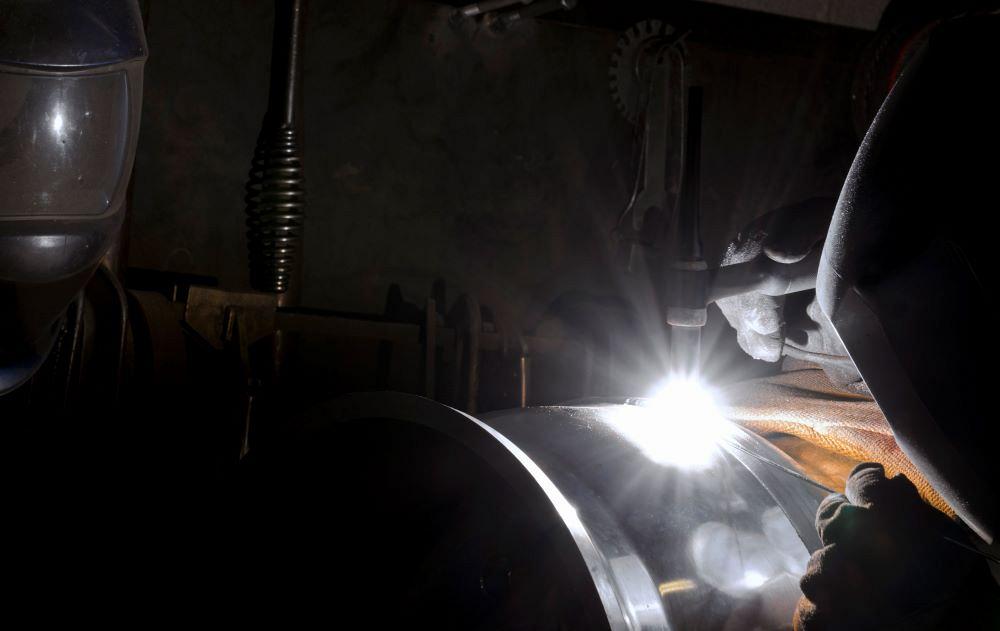Industrial Systems and Manufacturing Instructor
- FMA
- The Fabricator
- FABTECH
- Canadian Metalworking
Categories
- Additive Manufacturing
- Aluminum Welding
- Arc Welding
- Assembly and Joining
- Automation and Robotics
- Bending and Forming
- Consumables
- Cutting and Weld Prep
- Electric Vehicles
- En Español
- Finishing
- Hydroforming
- Laser Cutting
- Laser Welding
- Machining
- Manufacturing Software
- Materials Handling
- Metals/Materials
- Oxyfuel Cutting
- Plasma Cutting
- Power Tools
- Punching and Other Holemaking
- Roll Forming
- Safety
- Sawing
- Shearing
- Shop Management
- Testing and Measuring
- Tube and Pipe Fabrication
- Tube and Pipe Production
- Waterjet Cutting
Industry Directory
Webcasts
Podcasts
FAB 40
Advertise
Subscribe
Account Login
Search
The impact of sine and square waves in aluminum AC welding, Part I
Characteristics and applications of sine wave AC welding
- By Gina Cutts
- April 17, 2024
Alternating current (AC) welding is typically used on aluminum because of its ability to address the material's unique properties. In my experience, once an AC welding machine is set up and gets the job done, nobody really thinks about it again. But you might not be using your machine to its full potential if you’re not familiar with the different waveforms, primarily sine and square waves. Each has distinct effects on the welding process and resulting weld quality.
Understanding the effects of sine and square waveforms in AC welding is essential for achieving best performance and weld quality when working with aluminum. Choosing the right waveform will depend on several factors, including the specific requirements of the welding application, desired welding characteristics, and equipment capabilities.
While sine wave AC offers stability and uniformity, square wave AC excels in cleaning action and control. Welders use the unique attributes of each waveform to tailor their approach to meet the demands of diverse welding applications while ensuring consistency and reliability in their results.
Sine wave AC welding is characterized by a smooth, continuous waveform resembling the curve of a sine function. This waveform delivers a gradual transition between positive and negative cycles, creating a stable and balanced heat distribution across the welding arc. In aluminum welding, the sine wave's gentle oscillation helps prevent arc instability and ensures uniform penetration into the workpiece.
The key effects of sine wave AC welding include:
- Enhanced arc stability - The consistent and gradual transition of the sine wave minimizes arc flickering and instability, promoting smoother welding operations.
- Balanced heat input - Sine wave AC helps ensure even heat distribution, which reduces the risk of overheating or underheating specific areas of the aluminum workpiece.
- Improved weld quality - The controlled heat input and stable arc contribute to producing high-quality welds with uniform penetration and a reduced likelihood of porosity, cracking, and other defects.
Sine wave AC can be applied to:
- General fabrication - For applications in which weld appearance and uniformity are paramount, such as structural components or automotive parts, sine wave AC offers stable arc characteristics and even heat distribution that contribute to consistent weld quality.
- Thin aluminum sheets - Sine wave AC helps prevent burn-through and distortion on the material by providing gentle heat input and minimizing the risk of overheating.
- Critical weld joints - When weld integrity is crucial, such as on aerospace components or marine structures, the smooth arc stability of sine wave AC ensures reliable penetration and minimizes the likelihood of defects.
- Aluminum alloys - Sine wave AC is often preferred for many aluminum alloys as it offers versatility and adaptability to different material compositions while supporting weld quality.
Join me next time as I discuss square wave AC welding, its effects, and its applications.
subscribe now

The Welder, formerly known as Practical Welding Today, is a showcase of the real people who make the products we use and work with every day. This magazine has served the welding community in North America well for more than 20 years.
start your free subscriptionAbout the Author

About the Publication
- Stay connected from anywhere

Easily access valuable industry resources now with full access to the digital edition of The Fabricator.

Easily access valuable industry resources now with full access to the digital edition of The Welder.

Easily access valuable industry resources now with full access to the digital edition of The Tube and Pipe Journal.
- Podcasting
- Podcast:
- The Fabricator Podcast
- Published:
- 04/16/2024
- Running Time:
- 63:29
In this episode of The Fabricator Podcast, Caleb Chamberlain, co-founder and CEO of OSH Cut, discusses his company’s...
- Industry Events
16th Annual Safety Conference
- April 30 - May 1, 2024
- Elgin,
Pipe and Tube Conference
- May 21 - 22, 2024
- Omaha, NE
World-Class Roll Forming Workshop
- June 5 - 6, 2024
- Louisville, KY
Advanced Laser Application Workshop
- June 25 - 27, 2024
- Novi, MI

































